Yes, corn is good for diabetics and diabetics can eat corn in moderate quantities.
Corn, widely known as maize, is a versatile grain consumed globally. It can be eaten in various forms such as sweet, boiled, grilled, roasted, and even as products like corn tortillas, chips, and air-popped popcorn. It is nutrient-rich, providing dietary fiber, vitamins, and minerals including vitamin C, potassium, iron, and magnesium. A 100-gram serving of boiled sweet corn contains 86 kcal, 18.7 g of carbohydrates, and 2 g of fiber among other nutrients.
Corn can be a part of a balanced diet for diabetics, including those with prediabetes and type 2 diabetes, when consumed in moderation due to its moderate glycemic index (GI) value of 52. It’s crucial to monitor portion sizes to manage blood sugar levels. While fresh and frozen corn are beneficial, diabetics should be cautious with canned corn due to potential added sugars and sodium. Consulting a healthcare professional is advisable for specific dietary concerns related to diabetes.
Is corn good for diabetics OR bad for diabetics?
Yes, corn is good for diabetics when consumed in moderation. It’s a starchy vegetable rich in dietary fiber, aiding in blood sugar control. The carbohydrate content in corn can affect glucose levels, so portion control is vital. Whole grains like corn can benefit overall health. However, it’s essential to watch for added sugars or sodium in processed corn products. In summary, fresh or frozen corn can be a nutritious part of a diabetic’s diet, but moderation and mindful choices are key.
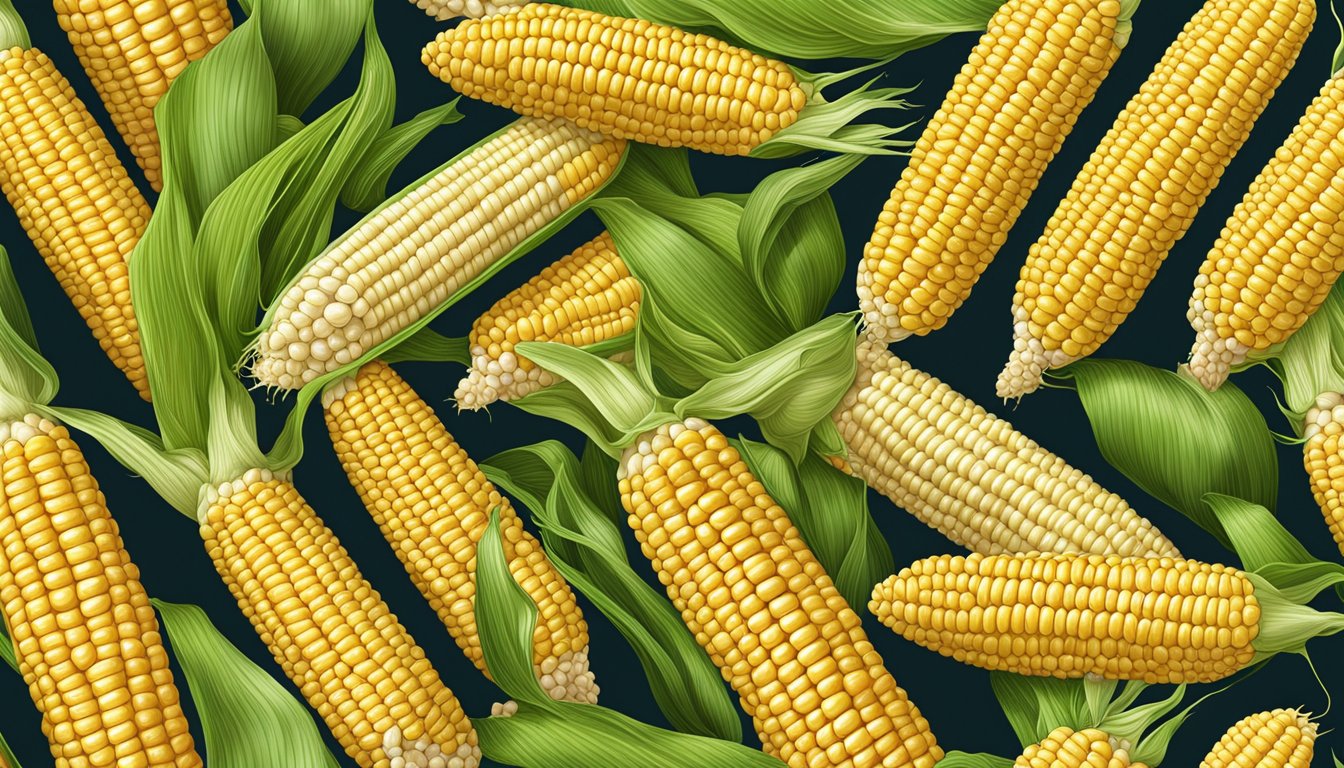
Can diabetics eat corn?
Yes, diabetics can eat corn, but in moderation. Corn is a starchy vegetable that is healthy to eat in moderation. It is a good source of dietary fiber, which can help with blood sugar control and contribute to overall good health.
Is corn good for prediabetes OR bad for prediabetes?
Corn can be consumed by individuals with prediabetes, as it is low in fat and cholesterol. Including corn in a balanced diet can help in managing blood sugar levels and preventing progression to full-blown diabetes.
Is corn good for gestational diabetes?
There is no specific information about corn being good or bad for gestational diabetes. However, it is important for pregnant women to maintain a balanced diet which includes whole grains, vegetables, lean proteins, and dairy products. It is advisable to consult with a healthcare professional to determine the specific needs and diet management for gestational diabetes.
Is corn good for type 2 diabetes?
Eating corn is a part of a healthy diet for people with type 2 diabetes, due to its nutrient-rich profile. Whole grains like corn are associated with a lower risk of diabetes and improving overall health, including cholesterol levels. However, it should be consumed in moderation, as it can impact blood sugar levels.
Is frozen corn good for diabetics OR bad for diabetics?
Frozen corn can be a good option for diabetics since it retains most of its nutritional value. It can help maintain blood sugar control while providing essential nutrients. However, like fresh corn, it should be consumed in moderation.
Is fresh corn good for diabetics OR bad for diabetics?
Fresh corn is a nutritious choice for diabetics as it contains dietary fiber, vitamins, and minerals. The key is to consume it in moderation to avoid blood sugar spikes and maintain a balanced diet.
Is boiled corn good for diabetics OR bad for diabetics?
Boiled corn can be a healthy option for diabetics, as boiling retains most of the nutrients while removing excess sugar. However, it should be consumed in moderation to prevent blood sugar fluctuations.
Is canned corn good for diabetics OR bad for diabetics?
Canned corn can be less beneficial for diabetics compared to fresh or frozen corn, as it may have added salt and sugar. It is important to read the labels and choose canned corn without added sugar or sodium to avoid negative effects on blood sugar levels.
Can diabetics eat canned corn?
Diabetics can eat canned corn, but it is essential to choose products without added sugar or sodium. To ensure better blood sugar control, it is advisable to consume fresh or frozen corn instead.
Is guinea corn good for diabetes OR bad for diabetes?
There is limited information about guinea corn’s impact on diabetes. It is recommended to consult with a healthcare professional or registered dietitian to discuss the suitability of guinea corn for an individual’s diabetes management plan.
What is the glycemic index of corn?
The glycemic index of corn is 52. This value categorizes corn as a low to moderate glycemic food. The glycemic index (GI) measures how carbohydrate-containing foods can affect blood sugar levels. A lower GI indicates slower digestion and absorption rates, leading to a gradual rise in blood sugar and insulin levels. Corn’s moderate GI means it won’t cause rapid spikes in blood sugar when consumed in appropriate portions. Therefore, including corn in a diabetic diet can be beneficial when portion sizes are monitored.

We answer some common questions below related to the sugar content of corn and its impact on blood sugar levels.
Is corn high in sugar?
While corn does contain sugar, it is not excessively high in sugar content. One ear of corn contains around 2 grams of sugar, making it a comparatively low-sugar food option.
Does corn have sugar?
Yes, corn does contain sugar, but as mentioned earlier, it is not a high-sugar food. The sugar found in corn primarily consists of natural sugars like glucose, fructose, and sucrose.
Does corn raise blood sugar?
Corn can raise blood sugar levels, but its impact largely depends on the portion size consumed and its GI value. Corn has a moderate GI value of 52, which means it has a moderate impact on blood sugar levels when consumed in appropriate portions.
Does corn turn into sugar?
As a carbohydrate, corn is broken down into glucose in the body. This process occurs when the body digests carbohydrates into simpler sugars for easy absorption and energy production. However, since corn has a moderate GI value, its conversion to glucose and subsequent impact on blood sugar is not as significant as that of high glycemic index foods.
Is corn high glycemic or low glycemic?
Corn is considered a low to moderate glycemic index food, with a GI value of 52. This categorization means that corn is less likely to cause a rapid spike in blood sugar levels compared to high glycemic index foods.
What is the glycemic index of boiled corn?
The glycemic index of boiled corn is 52, making it a low GI food suitable for people with diabetes. Consequently, including boiled corn in a meal plan can provide essential nutrients without causing significant fluctuations in blood sugar levels.
In summary, corn is a low to moderate glycemic index food that contains essential nutrients, vitamins, and minerals. When consumed in appropriate portions, corn can be a part of a balanced diet for individuals with diabetes.
What is corn and its nutritional value?
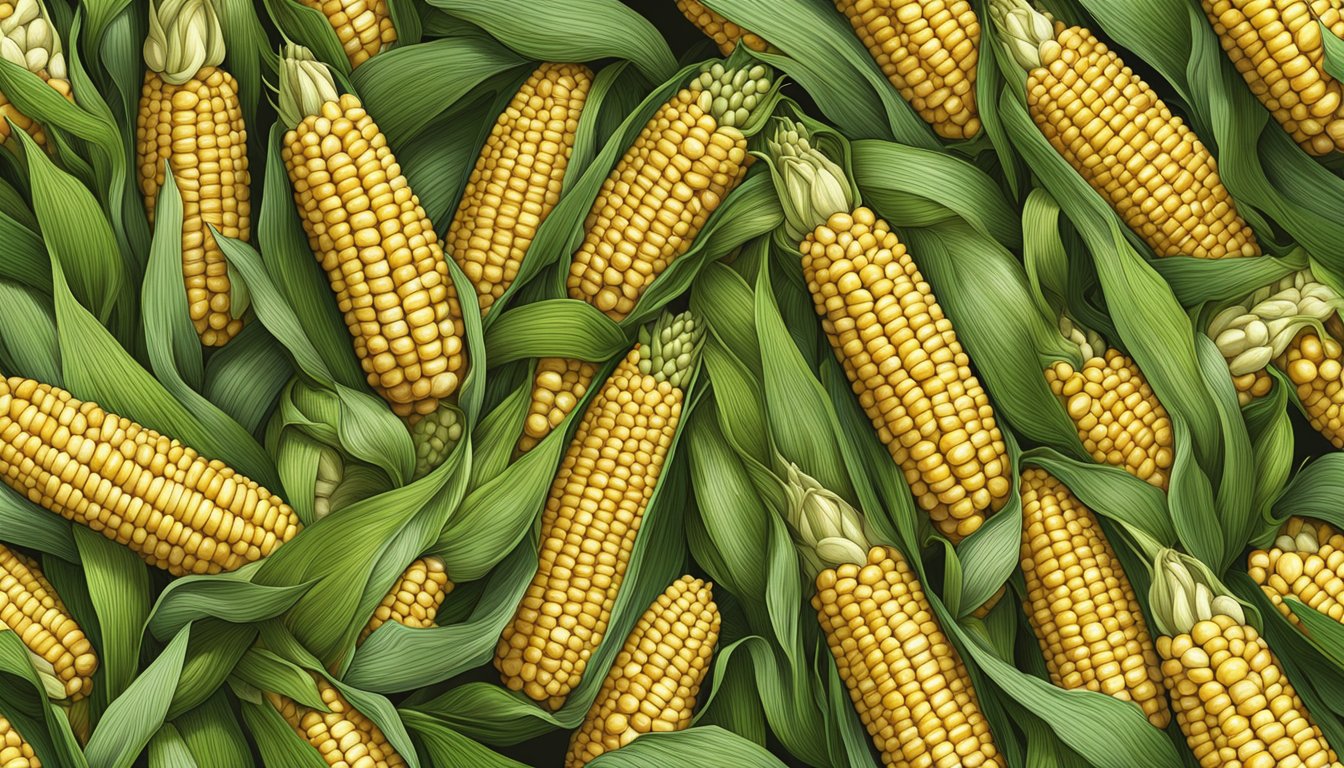
Corn, also known as maize, is a widely consumed grain around the world, available in various forms such as sweet corn, fresh corn, boiled corn, grilled corn, roasted corn, and whole corn kernels. It is also used to make corn tortillas, corn chips, and air-popped popcorn. Corn can be purchased fresh, frozen, or canned, making it a versatile and accessible food option for many.
Sweet corn is a popular type of corn, known for its tender kernels and naturally sweet flavor. It is often enjoyed as a side dish, in salads, or as an ingredient in various recipes. Boiled corn is a simple way to prepare and enjoy fresh corn, while grilled corn and roasted corn provide additional flavor due to the caramelization of sugars during the cooking process.
The nutritional value of corn can vary depending on its form and preparation method. Whole corn kernels provide a range of nutrients, including fiber, B vitamins, vitamin C, and minerals such as potassium, iron, and magnesium. These nutrients make corn a valuable addition to a balanced diet.
Here is a brief overview of the nutritional content of a 100-gram serving of boiled sweet corn:
- Calories: 86 kcal
- Carbohydrates: 18.7 g
- Protein: 3.27 g
- Fat: 1.35 g
- Fiber: 2 g
- Vitamin C: 6.8 mg
Frozen corn and canned corn typically maintain similar nutritional content to fresh corn, although some nutrients may be lost during the canning process. It is important to check the nutrition label of packaged goods for potential added sugars, salt, or other additives.
Air-popped popcorn is another form of corn with unique nutritional properties. When prepared without added oils or butter, it is a low-calorie snack that retains many of the health benefits of whole corn kernels. However, it is essential to practice portion control, as calorie content can add up quickly when consuming popcorn.
Corn is a versatile and delicious grain with various culinary uses and valuable nutritional content. Incorporating corn into a balanced diet offers essential nutrients that contribute to overall health.
Understanding diabetes and blood sugar levels
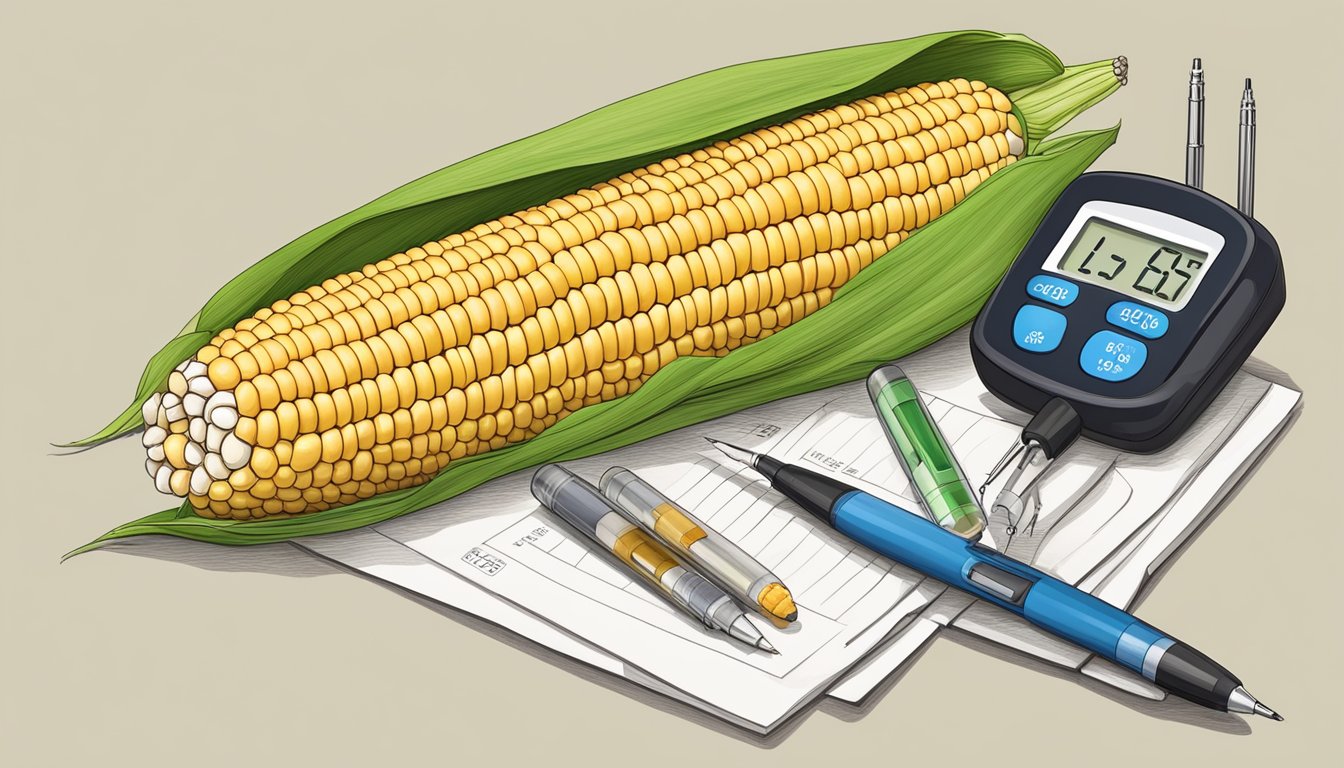
Diabetes is a chronic condition that affects the way the body processes blood sugar or glucose. When a person has diabetes, their body either doesn’t produce enough insulin or is unable to effectively use the insulin it does produce. Insulin is a hormone that helps in keeping blood glucose level in the bloodstream regulated.
Healthy blood sugar levels are essential for maintaining overall health and preventing complications associated with diabetes. Blood glucose levels naturally fluctuate throughout the day in response to food intake, exercise, and other factors. For individuals with diabetes, it is crucial to monitor and maintain these levels within a specified target range, to avoid sudden spikes or drops in blood sugar.
The glycemic index (GI) is a helpful tool in understanding how specific foods affect blood glucose levels. Foods with a high GI, such as sugar and white bread, cause rapid increases in blood sugar levels and trigger a stronger insulin response. In contrast, foods with a low GI, such as whole grains and certain fruits, raise blood glucose levels more gradually, allowing for better blood sugar control.
In managing diabetes, it is essential to focus on consuming a balanced, nutrient-rich diet, including carbohydrate sources that have a lower impact on blood sugar levels. This can help keep blood glucose within the recommended range and prevent blood sugar increases that can be harmful, particularly for individuals with diabetes.
Corn is a food that, when consumed in moderation, can be a part of a diabetes-friendly diet. Its low GI value means it doesn’t significantly raise blood glucose levels, and its high fiber content helps slow down the absorption of sugar in the bloodstream. Including corn in a meal plan, alongside non-starchy vegetables, lean proteins, and healthy fats, can contribute to managing diabetes and maintaining stable blood sugar levels.
Why is Corn Bad for Diabetics?
Why is Corn Bad for Diabetics?
Corn, while offering several health benefits, can pose challenges for diabetics when not consumed mindfully because of the below reasons.
1. Carbohydrate Content: Corn is a starchy vegetable. Its high carbohydrate content can elevate blood sugar levels if eaten in large amounts.
2. Glycemic Index: With a moderate glycemic index of 52, corn can impact blood sugar more than low-GI foods.
3. Portion Control: It’s easy to consume excessive portions of corn, leading to unintentional spikes in blood glucose.
4. Canned Corn Risks: Canned varieties often contain added sugars and sodium, which are not ideal for diabetics.
5. Digestion Rate: Corn’s carbs break down into glucose, which can lead to rapid increases in blood sugar if consumed without other foods to slow absorption.
For optimal diabetes management, it’s crucial to be aware of these factors and consume corn in moderation.

What are the benefits of corn for diabetes?
Although corn has been considered potentially problematic for diabetics due to its starchy nature, it also offers some benefits. Corn is a source of energy, vitamins, minerals, and fiber, which can be helpful in managing diabetes when consumed in moderation [^1^]. It is also low in sodium and fat, making it a relatively healthy food option. Fiber, in particular, plays an essential role in moderating the spike in blood sugars, which can help people with diabetes.
How much corn can a diabetic eat?
For diabetics, it’s essential to balance corn intake with individual dietary needs. While corn can be a part of a diabetic diet, moderation is key to avoid significant spikes in blood sugar levels. There isn’t a one-size-fits-all recommendation for corn consumption as it depends on an individual’s specific dietary and health requirements. It is crucial to consult a healthcare professional or a registered dietitian to tailor a balanced diet plan suitable for managing diabetes.
Serving size and consumption of corn

When it comes to incorporating corn into a diabetic diet, it is essential to consider the serving size and consume it in moderation. A half-cup serving of sweet cooked corn contains about 16 grams of carbs, while a small ear about 6 inches long provides approximately 19 grams.
Corn can be a nutritious addition to a diabetic diet due to its low glycemic index, meaning it doesn’t significantly raise blood sugar levels. However, it is still a starchy food group, and consuming excessive quantities may cause blood sugar levels to rise. Therefore, sticking to moderate quantities of corn is crucial to maintaining a balanced meal plan for people with diabetes.
When incorporating corn into a meal, it is advisable to consume it alongside non-starchy vegetables, lean proteins, and healthy fats. This combination will not only provide a variety of essential nutrients but also help manage the overall glycemic impact on the blood sugar levels of a person with diabetes.
Additionally, corn is a good source of vitamins, minerals, and fiber, offering various health benefits to people with diabetes. Consuming corn in appropriate portions and frequency can result in maintaining blood sugar levels and improve overall health management for diabetics.
Remember to always monitor the corn intake to ensure appropriate portion sizes, aiming for a balanced diet that includes other essential nutrients and minimizes sudden blood sugar spikes.
How to include corn in a diabetic diet?
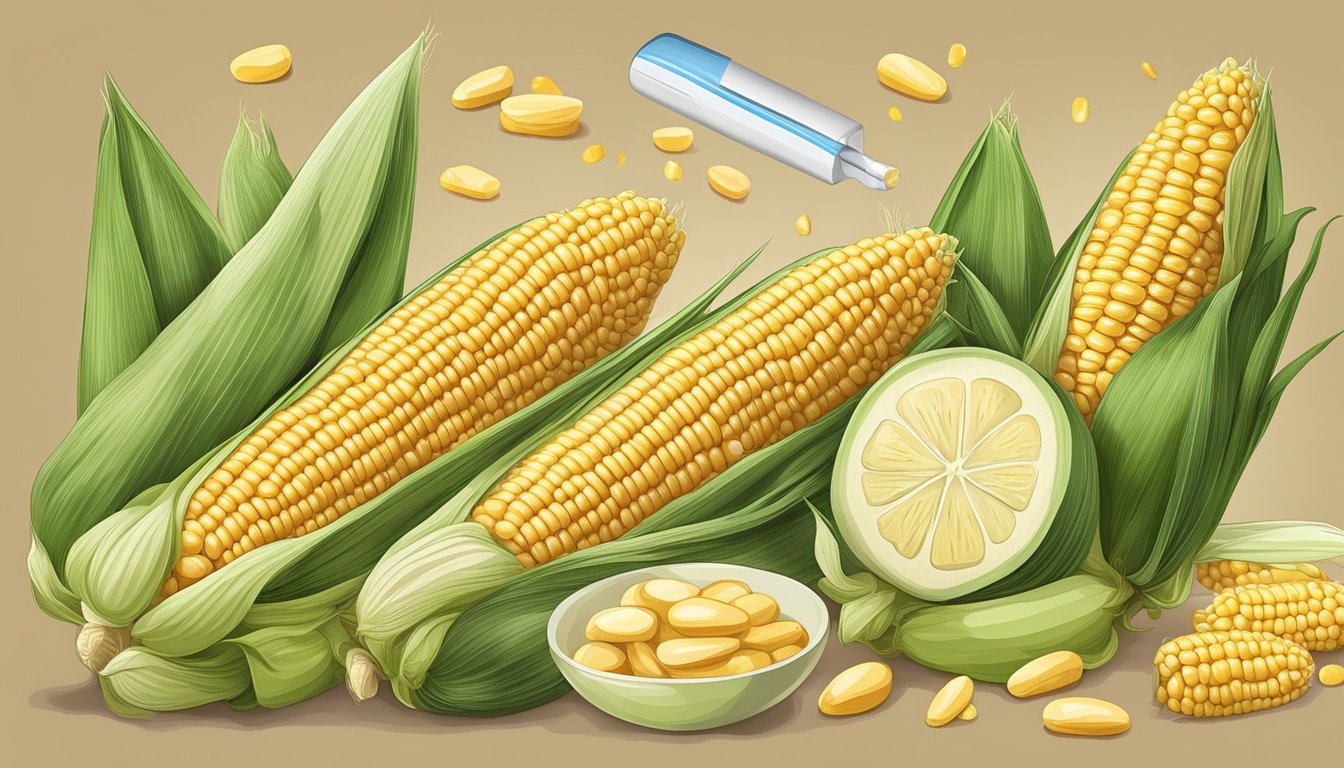
Corn can be a beneficial addition to a diabetic diet when consumed in moderation. As a source of energy, vitamins, minerals, and fiber, corn is considered a low glycemic index food, meaning it does not cause blood glucose levels to spike as rapidly as some other starchy vegetables. To incorporate corn into a healthy diabetes diet, consider the following recommendations.
Diabetics should aim for a balanced meal plan that includes whole grains, lean proteins, non-starchy vegetables, and high-fiber foods. Corn, being a starchy food group, should be consumed in appropriate portion sizes to avoid a potential increase in blood sugar levels. To maintain balance, replace another starchy item in your meal with corn, rather than adding it on top of existing carbohydrate sources.
When selecting corn, opt for whole corn or corn on the cob instead of processed corn products. Whole foods are generally more nutrient-dense and less likely to cause blood sugar fluctuations. In addition, consider combining corn with high-fiber foods and lean proteins to slow down the absorption of carbohydrates and further regulate blood sugar levels.
Some ideas to include corn in a diabetic diet are listed below.
- Salads: Add a small portion of cooked corn to a salad containing non-starchy vegetables, such as leafy greens, tomatoes, and cucumber. Pair the salad with a lean protein source like grilled chicken or tofu.
- Whole grains: Incorporate corn into whole grain dishes, such as brown rice or quinoa, for added texture and flavor. Ensure that the portion sizes remain appropriate to manage carbohydrate intake.
- Stir-fries: Use corn as one of the vegetables in a stir-fry, along with non-starchy options like bell peppers, broccoli, and zucchini. Choose lean proteins like fish, chicken, or tempeh to complete the dish.
It is essential for individuals with diabetes to monitor their blood sugar levels when introducing new foods, including corn. Everyone’s body may react differently, so paying close attention to your body’s response can help you determine if corn is an appropriate addition to your diabetes diet.
How to enhance corn for health benefits?
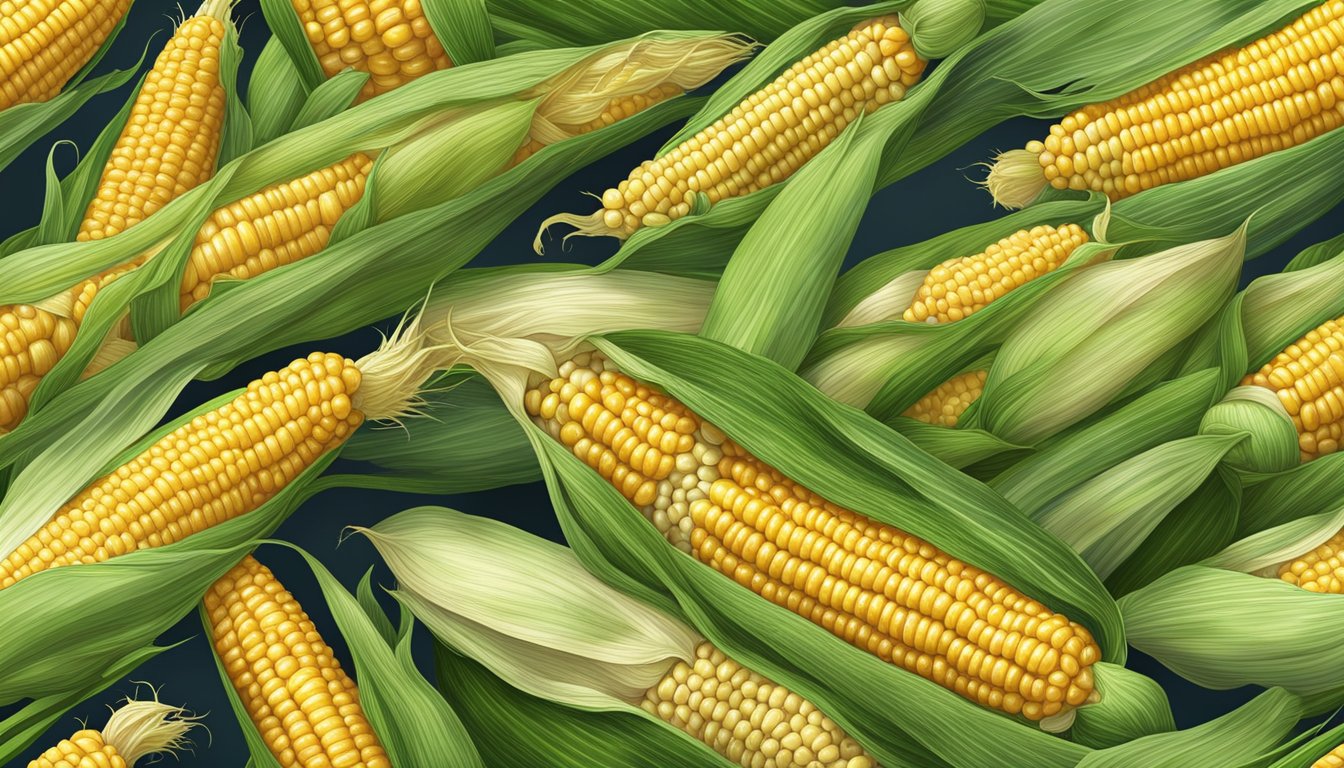
Corn can be a healthy addition to a diabetic’s diet, as it is low in glycemic index and offers several nutritional benefits. To further enhance corn’s health benefits, there are a few strategies to consider.
One way to add more flavor and health benefits to corn is by incorporating lemon or lime juice. These citrus fruits are rich in vitamin C and antioxidants, helping to boost the immune system and maintain a healthy nervous system. Simply drizzle a small amount of lemon or lime juice over cooked corn to make it more appetizing while promoting overall health.
Adding healthy fats, such as olive oil, can also improve the health properties of corn. Olive oil is rich in monounsaturated fatty acids and phenolic compounds, which have been shown to support heart health, reduce inflammation, and regulate blood sugar levels. Lightly drizzle olive oil on corn before roasting or grilling for an added layer of delicious flavor and improved health benefits.
Corn on its own is a good source of dietary fiber, which aids digestion and helps regulate blood sugar levels. Including other high-fiber foods when serving corn, like a mixed salad or sautéed mixed vegetables, can boost the overall fiber content of the meal and improve its benefits for diabetics. This way, the overall portion of corn can be minimized, ensuring it remains a good option for those with diabetes.
Enhancing corn with additional ingredients like lemon juice, lime juice, olive oil, and other high-fiber foods can provide individuals with diabetes a tasty and balanced option. These simple strategies can further improve the nutritional benefits of corn without compromising blood sugar management.
What are corn alternatives for diabetes?
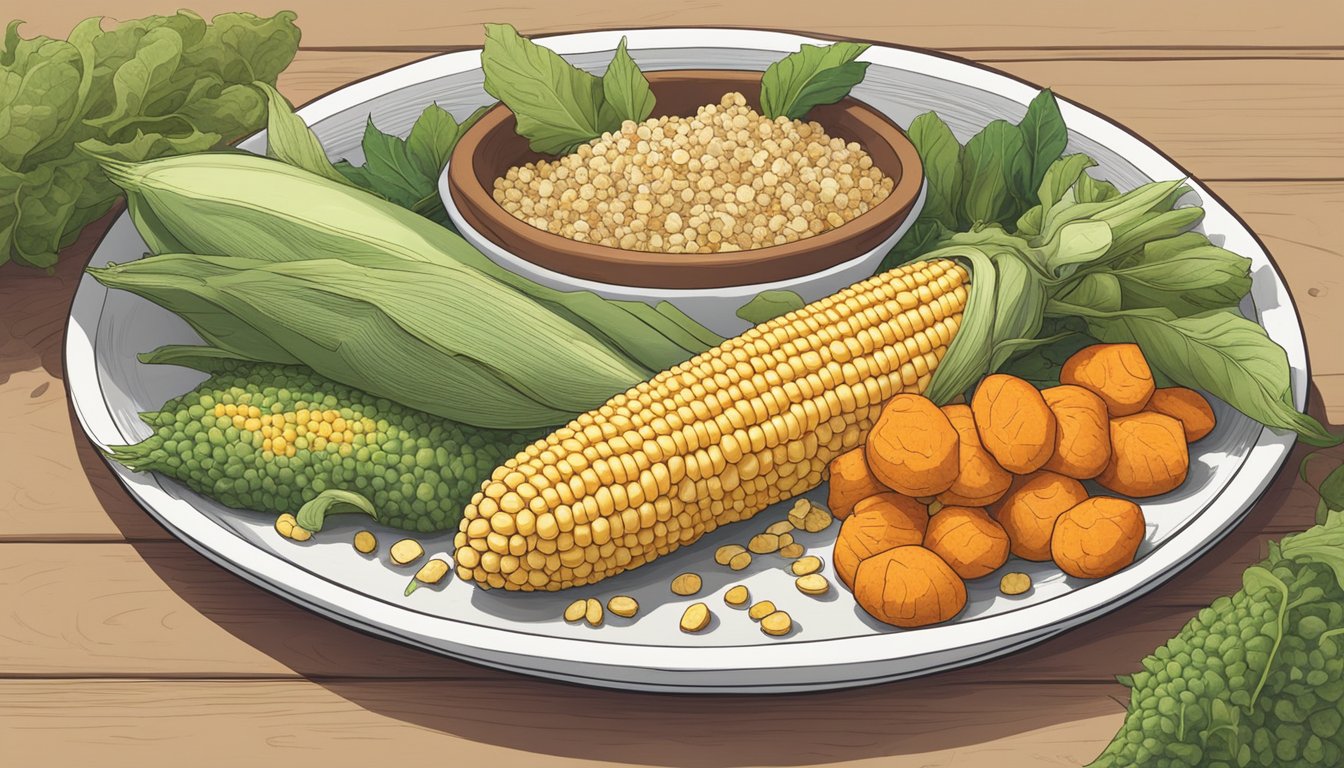
Brown rice, whole grain pasta, legumes and leafy green vegetables are good corn alternatives for diabetes. While corn can be beneficial for diabetics in moderation, it’s essential to maintain a balanced diet that includes other nutritious, low glycemic index foods.
Brown rice is a healthier substitute for corn, as it provides essential nutrients, is rich in fiber, and has a lower glycemic index. Brown rice is known to release glucose slowly into the bloodstream, making it an excellent choice for people with diabetes. It can be incorporated into various dishes, such as stir-fries, salads, or paired with lean proteins and vegetables.
Aside from brown rice, there are other foods that can be incorporated into a diabetic-friendly meal plan. Some examples are listed below.
- Whole grain pasta: Opting for whole grain pasta can help lower blood sugar, as it is a good source of fiber and complex carbohydrates. This type of pasta helps maintain stable blood sugar levels and slows down digestion.
- Legumes: Beans, lentils, and peas are low in glycemic index and rich in fiber, making them excellent replacements for corn. Legumes can be used in various dishes such as salads, soups, and casseroles.
- Leafy green vegetables: Vegetables like spinach, kale, and collard greens are low in calories, carbs, and high in nutrients. These non-starchy leafy greens can be added to salads, smoothies, or used as a side dish.
For individuals with diabetes, it’s essential to diversify your diet and try out these corn alternatives. Prioritizing foods with a low glycemic index, high fiber content, and essential nutrients will significantly help in managing blood sugar levels. Remember always to consult your healthcare provider or a registered dietitian for personalized dietary advice.
Is corn flour good for diabetics OR bad for diabetics?
Corn flour is not the best choice for diabetics. Derived from whole corn kernels, corn flour is a type of refined carbohydrate. When consumed, it can lead to a rapid rise in blood sugar levels. The refining process strips away most of the fiber and essential nutrients, reducing its overall nutritional benefit. For diabetics, it’s essential to opt for whole grain options and monitor carbohydrate intake to manage blood sugar levels effectively. In conclusion, while corn in its natural form can be part of a diabetic diet, corn flour should be consumed with caution.

Can a diabetic patient eat corn flour?
Diabetic patients can consume corn flour in moderation. However, the daily intake should be restricted to approximately a tablespoon (8 to 15 grams) to maintain a healthy lifestyle and manage blood sugar levels effectively.
What is the glycemic index of corn flour?
Corn has a glycemic index (GI) value of 52, making it a low to moderately low GI food. A lower GI value suggests that the food is less likely to cause rapid spikes in blood sugar levels. Note that other related GI values include a corn tortilla at 46, cornflakes at 81, and popcorn at 65.
Does corn flour raise blood sugar?
Corn flour can have an impact on blood sugar levels due to its carbohydrate content. However, the glycemic index of corn shows that it may not cause excessive fluctuations in blood sugar. For optimal blood sugar control, it’s important for diabetic individuals to consume corn flour in moderation.
Is sweet corn good for diabetics OR bad for diabetics?
Sweet corn is acceptable for diabetics when consumed in moderation. As a variety of maize, sweet corn contains dietary fiber, which can aid in blood sugar control. However, its natural sweetness indicates a slightly higher sugar content than regular corn. It’s essential for diabetics to monitor their intake and consider the overall carbohydrate content of their meal when incorporating sweet corn. In conclusion, while sweet corn can be a part of a diabetic diet, portion control is key to prevent blood sugar spikes.

Is sweet corn good for type 2 diabetes?
Sweet corn can be a healthy addition to the diet of people with type 2 diabetes when consumed in moderation, as it contains many essential vitamins and minerals such as Vitamins A, B, and C, potassium, magnesium, iron, and zinc. Moreover, sweet corn contains carotenoids like lutein, zeaxanthin, and folate, which are beneficial for diabetics. However, it is essential to monitor portion sizes to avoid excessive carbohydrate intake, as it can affect blood sugar levels.
Can diabetics eat sweet corn?
Yes, diabetics can eat sweet corn, but moderation is key. Sweet corn, like other starchy vegetables, contains carbohydrates, but its glycemic index (GI) is within an acceptable range (52). Sticking to proper portion sizes and balancing it with other low-GI foods can help people with diabetes manage their blood sugar levels effectively.
What is the glycemic index of sweet corn?
The glycemic index of sweet corn is 52, making it a medium-GI food. Scores of 0-55 are considered low glycemic index foods, while scores of 55-70 are medium glycemic index foods, and scores above 70 are high glycemic index foods. Thus, sweet corn’s GI indicates that it has a moderate impact on blood sugar levels.
Does sweet corn increase blood sugar?
Sweet corn does contain carbohydrates that can cause an increase in blood sugar levels. However, its medium glycemic index of 52 means that it raises blood sugar levels more slowly compared to high-GI foods. To minimize its impact on blood sugar, it is essential to consume sweet corn in moderation and combine it with other lower-GI foods.
What is the sugar content of sweet corn?
Sweet corn contains natural sugars, but its exact sugar content may vary depending on the type of corn and its ripeness. In general, sweet corn is not high in sugar compared to other vegetables or fruits. However, it does contain starch, which can result in a gradual release of energy and an increase in blood sugar levels as it gets digested. For people with diabetes, it is important to control portions and be mindful of the overall carbohydrate content of their meals.
Is corn on the cob good for diabetics OR bad for diabetics?
Corn on the cob is good for diabetics when consumed in moderation. This form of corn retains its natural nutrients and is a source of dietary fiber, which aids in blood sugar control. However, diabetics should monitor portion sizes to prevent blood sugar spikes. It’s essential to pair corn on the cob with a balanced diet to ensure optimal blood sugar management. In summary, while corn on the cob can be a nutritious choice, moderation is key for those managing diabetes.

Can diabetics eat corn on the cob?
Diabetics can eat corn on the cob, but it is important to do so in moderation. Corn is a high-carbohydrate food, which can raise blood sugar levels. However, it is also a good source of fiber that can help regulate blood sugar levels. The American Diabetes Association recommends people with diabetes aim for 1/2 cup of starchy vegetables per meal, and one ear of corn on the cob is roughly equivalent to 1/2 cup.
What is the glycemic index of corn on the cob?
The glycemic index of corn on the cob is 52, which is considered low to moderate. Other glycemic index values of corn-based products include corn tortilla at 46, cornflakes at 81, and popcorn at 65. Foods with a high-glycemic index (70 and above) can increase blood sugar levels, so corn on the cob generally has a minimal impact on blood glucose.
Does corn on the cob raise blood sugar?
As a high-carbohydrate food, corn on the cob can raise blood sugar levels. However, since it has a relatively low glycemic index, it has less of an impact on blood sugar than foods with a high-glycemic index. The fiber present in corn can help regulate blood sugar levels by slowing down the absorption of glucose.
Does corn on the cob have sugar?
Corn on the cob does contain natural sugar, but it also provides a variety of minerals and vitamins that help maintain overall health, including blood sugar control. The sugar content in corn on the cob is not a cause for concern when consumed as part of a healthy, balanced diet.
Is cornmeal good for diabetics OR bad for diabetics?
Cornmeal, derived from ground corn, can be included in a diabetic diet when consumed in moderation. It contains dietary fiber, which can assist in stabilizing blood sugar levels. However, it’s important to note that cornmeal, like other grain products, is a source of carbohydrates. Consequently, portion control is crucial to prevent potential spikes in blood glucose. Pairing cornmeal-based dishes with protein or healthy fats can further help in maintaining steady blood sugar levels. In summary, cornmeal can be a part of a diabetic diet, but attention to portion size and meal balance is essential.

Can diabetics eat cornmeal?
Diabetics can consume cornmeal in moderation, as it is a starchy food with high carbohydrates content. However, it is essential for them to control their portion sizes to avoid spikes in blood sugar levels. One cup of cornmeal contains approximately 123 grams of carbohydrates, which may affect blood sugar levels if not managed properly.
What is the glycemic index of cornmeal?
The glycemic index (GI) is a ranking system for carbohydrates and their effect on blood glucose levels. Foods with a high GI (70 and above) can increase blood sugar levels. Although cornmeal’s GI is not explicitly mentioned in the provided search results, it’s related and derived food products like corn tortillas have a GI of 46, cornflakes have a GI of 81, and popcorn has a GI of 65.
Does cornmeal raise blood sugar?
As cornmeal is high in carbohydrates, it can potentially raise blood sugar levels, making it crucial for diabetics to be mindful of their portion sizes and frequency of consumption. It’s always a good idea to consult with a healthcare professional or nutritionist when incorporating new food items into a diabetic diet, to ensure proper blood sugar management.
Is yellow corn meal good for diabetics OR bad for diabetics?
Whether yellow or white cornmeal, both types have similar nutritional profiles and are high in carbohydrates. Consequently, diabetics should monitor their intake and portions of yellow cornmeal as well, ensuring that they maintain a well-balanced diet with other essential food groups like lean proteins, non-starchy vegetables, and whole grains.
Is cornmeal porridge good for diabetics OR bad for diabetics?
Cornmeal porridge might not be the best choice for diabetics due to its carbohydrate content. However, occasional consumption in small, controlled portions can be acceptable. As an alternative, diabetics can try low-carb versions of corn-based dishes like low-carb cornbread to satisfy their cravings while managing their blood sugar levels efficiently.
Is corn chips good for diabetics OR bad for diabetics?
Corn chips are not the best choice for diabetics. Corn chips are crispy snacks made from processed corn and can be high in unhealthy fats and sodium. Additionally, they can lead to rapid spikes in blood sugar levels when consumed in large quantities. It’s essential for diabetics to monitor portion sizes if choosing to consume corn chips. Opting for whole grain or baked alternatives with lower salt and no added sugars can be a better option. However, it’s always advisable for diabetics to consult with a healthcare professional before incorporating such snacks into their diet.
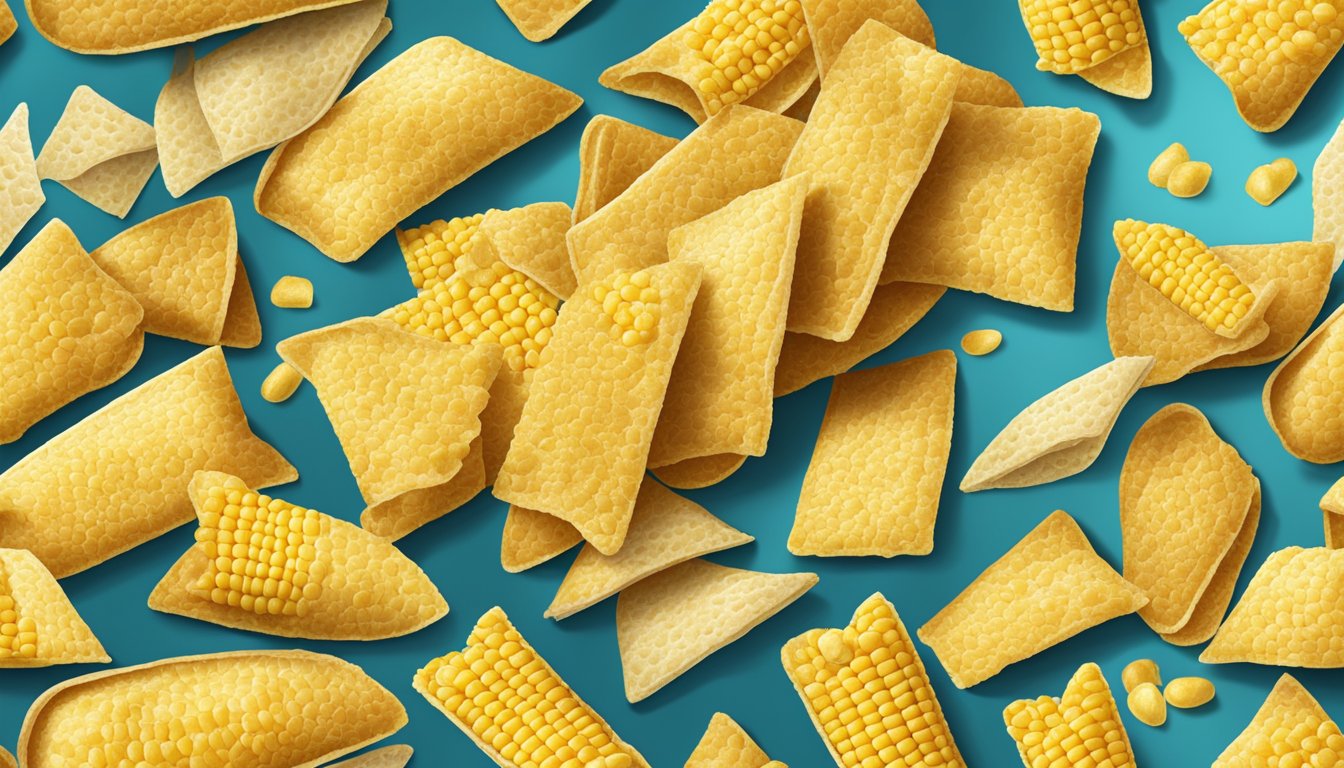
Can diabetics have corn chips?
Diabetics can consume corn chips, but moderation is key. A serving of corn chips contains about 10 grams of fat and 15 grams of carbohydrates, with very little protein source. When eaten in controlled portion sizes and combined with a good helping of protein, corn chips can be a part of a diabetic’s balanced diet. It is essential for someone with diabetes to keep their blood sugar levels in check, and pairing high-carb foods like corn chips with a source of protein can help achieve this balance.
Do corn chips raise blood sugar?
Corn chips have a moderate glycemic index and can impact blood sugar levels. However, sweet corn, which is rich in carbohydrates and natural sugars also has a high glycemic index but manages to not negatively affect blood sugar levels.
Ultimately, consuming corn chips in a controlled portion size, and combining it with protein, allows diabetics to enjoy this snack without significantly raising their blood sugar levels. It’s worth noting that monitoring carbohydrate intake and making informed choices about snack options, such as exploring the best chip brands for diabetics, can help maintain optimal blood sugar levels and support overall health.
Is corn tortilla good for diabetics OR bad for diabetics?
primarily from ground maize, they are a source of whole grains which can be beneficial for blood sugar control. However, it’s essential to note the carbohydrate content, as tortillas can contribute to daily carb intake. Ideally, pairing tortillas with high-fiber vegetables and lean proteins can help stabilize blood sugar levels. It’s also important to opt for tortillas with minimal additives and preservatives. While corn tortillas can be a part of a diabetic-friendly diet, portion control and mindful pairing are key.
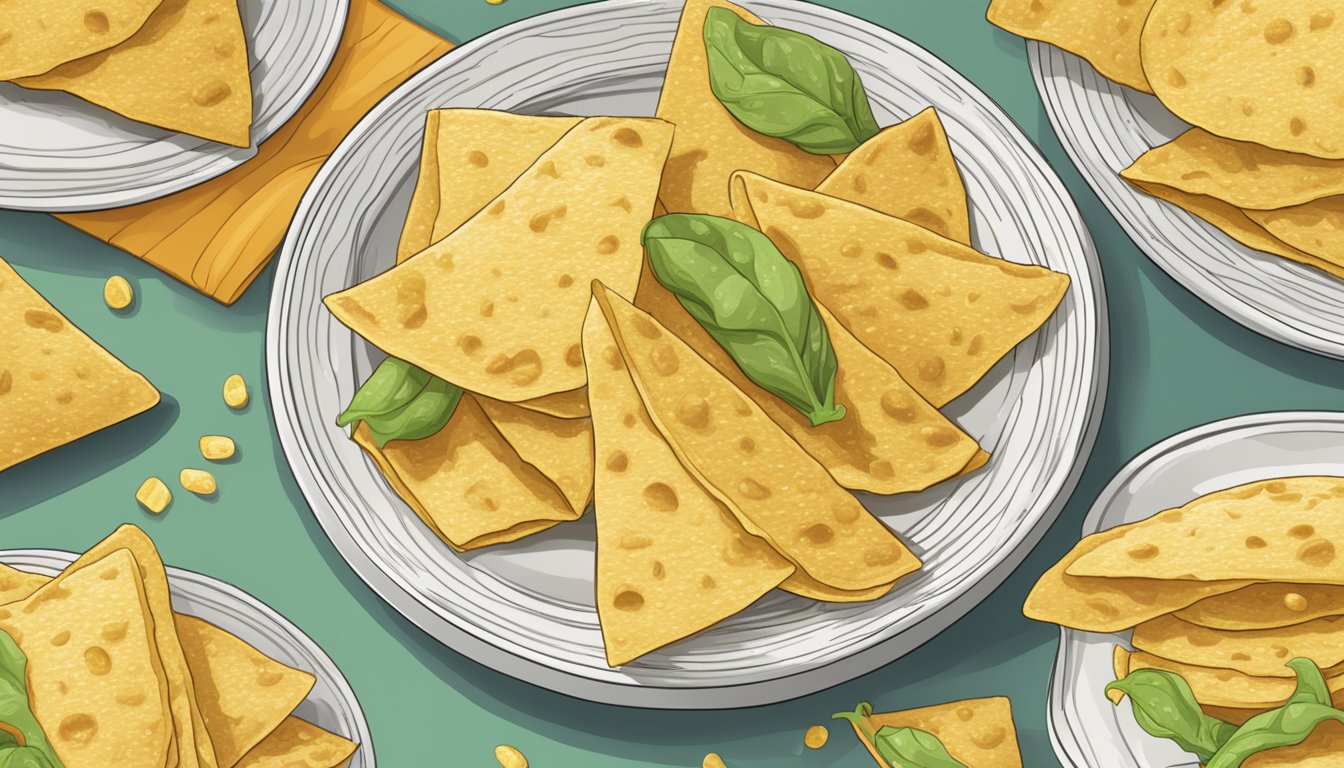
Can diabetics eat corn tortillas?
Yes, diabetics can eat corn tortillas. In fact, corn tortillas are a better option for people with diabetes than bread because they generally have fewer calories. A small corn tortilla has around 60-65 calories, while a slice of bread contains up to 100 calories.
What is the glycemic index of corn tortilla?
The glycemic index (GI) of corn tortilla ranges from 49-52, which is considered low. A low glycemic index food is one that has a GI value of 55 or less and is more favorable for diabetics as it causes a slower, more gradual rise in blood sugar.
Are corn tortillas low glycemic or high glycemic?
Corn tortillas are low glycemic, as they have a GI value ranging from 49-52. This low GI value makes them a better option for diabetics, as they cause a slower and more gradual rise in blood sugar levels compared to high glycemic foods.
Do corn tortillas raise blood sugar?
While all carbohydrates have some effect on blood sugar levels, corn tortillas have a lower impact on blood sugar due to their low GI. Regular consumption of low glycemic foods, like corn tortillas, can help diabetics better manage their blood sugar levels.
What is the glycemic index of yellow corn tortilla?
Yellow corn tortillas have a glycemic index of around 52. This is considered a low GI value, making them a suitable option for diabetics. Blue corn tortillas, however, are even more favorable for diabetics, as they have less starch, more protein, and a lower glycemic index than both white and yellow corn tortillas.
Is hominy good for diabetics OR bad for diabetics?
Hominy can be a suitable option for diabetics when incorporated thoughtfully into a meal plan.
Hominy is made from dried maize kernels that have been treated with an alkali solution. Due to this process, the nutritional profile of hominy differs slightly from regular corn. Hominy is a good source of dietary fiber, which can be beneficial for blood sugar management. Consuming fiber-rich foods like hominy can help slow the absorption of sugar and thus stabilize blood sugar levels. Additionally, hominy is low in fat and provides essential vitamins and minerals.
For diabetics, including hominy in a balanced diet can be advantageous when consumed in moderation. However, as with all carbohydrate-rich foods, portion control is essential to prevent blood sugar spikes. It’s also advisable to pair hominy with a protein or healthy fat to further moderate its impact on blood sugar.
Can diabetics eat hominy?
Hominy, made from dried maize kernels, can be consumed by diabetics in moderate amounts. It has a medium carbohydrate content and a low glycemic index (GI), which is essential for controlling blood glucose levels. However, it is crucial for individuals with diabetes to consider portion sizes when consuming hominy to ensure that their blood sugar levels remain stable.
What is the glycemic index of hominy?
The glycemic index of hominy is 40, classifying it as a low-GI food. Low-GI foods cause a slow, steady rise in blood sugar levels and can help manage diabetes better. However, it is important to note that consuming a large portion of hominy may raise its GI value to a medium level. So, portion control is equally essential when consuming hominy.
Does hominy raise blood sugar?
Hominy does not raise blood glucose levels rapidly when consumed in moderate amounts. Its low GI value helps maintain steady blood sugar levels. However, eating large portions of hominy can potentially elevate blood sugar levels due to the increase in the glycemic index.
In the context of corn tortillas, it is crucial to consider their type and ingredients. Whole grain corn tortillas, for example, may be a better option for diabetics compared to refined flour-based tortillas, as they have a lower glycemic index and typically contain more dietary fiber. It’s essential to keep portion sizes in check and monitor individual blood sugar response when including corn tortillas in a diabetic meal plan.
FAQs on whether corn is good or bad for diabetes
Do people with diabetes eat corn?
Yes, people with diabetics eat corn, but in moderation
Are corn nuts good for diabetics or bad for diabetics?
Corn nuts can be enjoyed by diabetics in moderation. They are a source of vitamins, minerals, and fiber. However, they are also high in carbohydrates, which can affect blood sugar levels. It is important to practice portion control when consuming corn nuts.
Is corn rice good for diabetics?
Corn rice is considered a healthy option for diabetics, as it has a low glycemic index. This means it can help manage blood sugar levels better than white rice. However, portion control is still important when consuming corn rice.
Can type 2 diabetics eat cornbread?
Type 2 diabetics can eat cornbread in moderation, but it is essential to choose a recipe made with whole-grain cornmeal and minimal added sugar. Keep in mind that portion control is crucial, as cornbread can still affect blood sugar levels.
Are Fritos good for diabetics?
Fritos, a corn-based snack, are not recommended for those with diabetes due to their high fat and sodium content. Opt for healthier snack options like air-popped popcorn or raw vegetables instead.
Is maize good for diabetics or bad for diabetics?
Maize, also known as corn, can be good for diabetics if consumed in moderation. Regular consumption of corn has been linked to a lower risk of developing serious diseases such as heart disease, obesity, and type 2 diabetes. However, it is important to maintain portion control due to its carbohydrate content.
Can corn flakes be consumed by diabetics?
Corn flakes are not the ideal choice for diabetics, as they are made from refined grains and often contain added sugar. This could lead to elevated blood sugar levels. Choose whole-grain, low-sugar cereals instead for a healthier option.
Is popcorn a safe snack for diabetics?
Popcorn, when air-popped and without added butter or salt, can be a safe snack for diabetics. However, it is crucial to control portion size, as consuming too much popcorn may cause a spike in blood sugar levels.
Which type of corn is best for type 2 diabetes?
Whole-grain corn products are the best choice for those with type 2 diabetes, as they contain more fiber, nutrients, and have a lower glycemic index compared to refined and processed corn options.
How does sweet corn impact gestational diabetes?
Sweet corn, like other types of corn, can affect blood sugar levels. For those with gestational diabetes, it is essential to consume sweet corn in moderation and monitor portion sizes to prevent a spike in blood sugar levels. Consult your healthcare provider for personalized recommendations on managing gestational diabetes.
